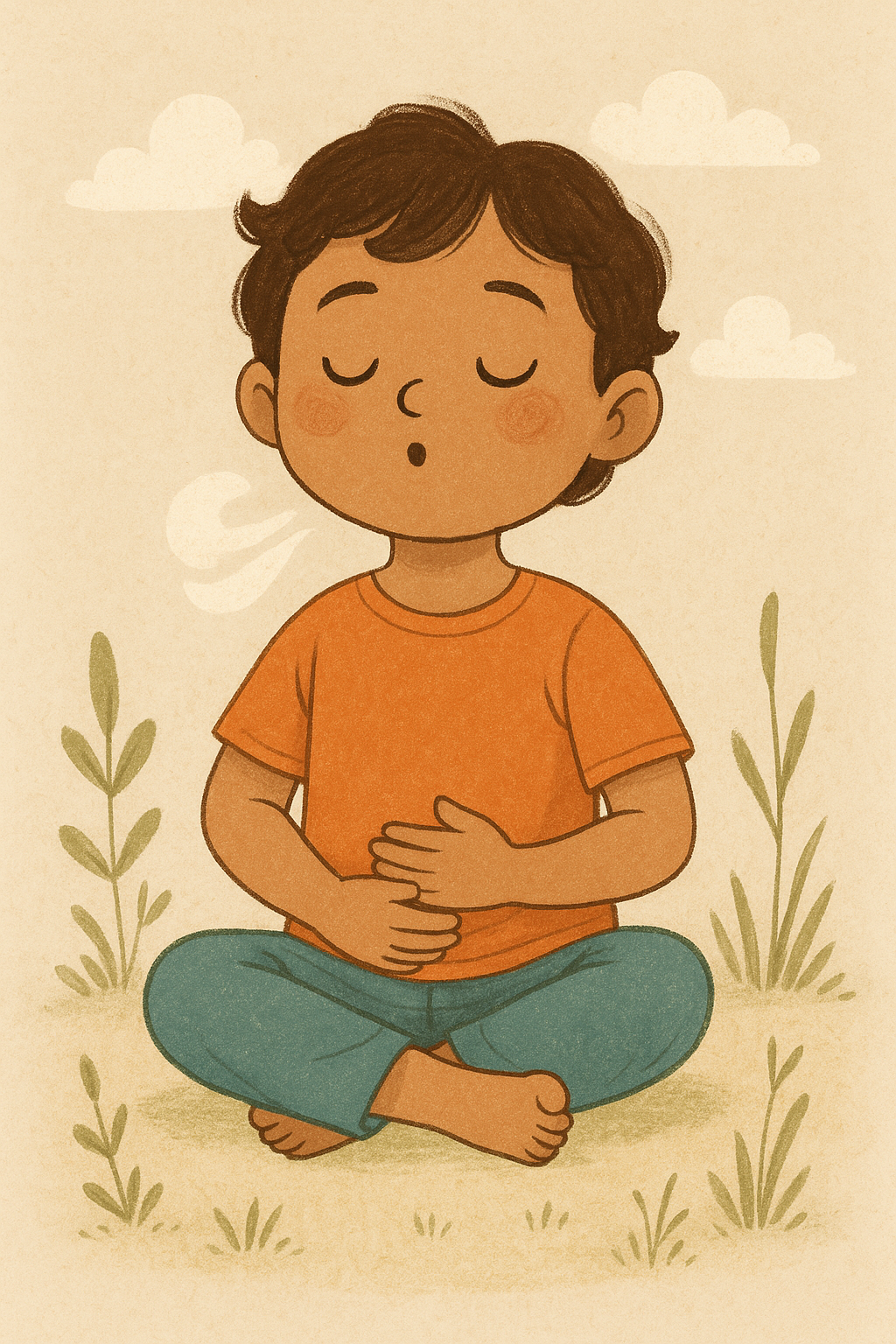Your basket is currently empty!

Teaching Children Calm Through the Breath
In the swirl of homework, sports, screens, and friendships, children can feel overwhelmed. Sometimes the simplest pause—a breath—can become a powerful anchor. Mindful breathing gives kids a tool to step out of stress, reconnect with themselves, and return to balance.
Why Breathing Matters
When a child takes a deep, intentional breath:
- Their heart rate slows, muscles ease tension, and the brain receives signals of safety.
- It interrupts the fight-or-flight cascade — giving space between stimulus and reaction.
- That “pause” helps them shift from frustration, anger, or anxiety into calm awareness.
Over time, as breathing becomes a habit, meltdowns shorten, arguments ease, and their energy becomes gentler and more grounded.
Making Breathing Fun & Engaging
Kids learn best when practices feel playful. Here are techniques to bring mindful breathing alive:
- Balloon Breathing: Imagine a balloon in the belly. On the inhale, “fill” the balloon; on the exhale, let it deflate.
- Cloud Breath: Breathe in calm like a soft cloud, and breathe out worries as if they drift away on the wind.
- Flower & Candle: Pretend there’s a flower in front of you—inhale smell it; exhale like you’re gently blowing out a candle.
- Square Breathing: Breathe in (count 4), hold (4), breathe out (4), pause (4). Use fingers or visual squares to help children follow along.
- Five-Finger Breathing: Trace one hand with the other; as you trace “up” inhale, as you trace “down” exhale.
Encouraging variety keeps the practice fresh and engaging.
Deepening with Journaling & Reflection
Breathing becomes more meaningful when paired with reflection:
- Breathing Log / Journal: After doing a breathing exercise, a child can draw or write how they felt before and after.
- Over time, they can observe patterns: “When I’m upset with my sibling, balloon breathing helps me feel calmer.”
- This awareness connects the experience with the insight—not just doing breathing, but understanding why it helps.
When a child notices tension, racing thoughts or upset, they can bring their breath to those spots and observe the change.
Benefits Over Time
Children who build mindful breathing habits show:
- Stronger emotional regulation: they recover from upset faster
- Reduced stress and anxiety: having a go-to tool to centre themselves
- Improved attention & focus: the breath becomes an anchor to concentration
- Greater self-awareness: because breathing + reflection teaches noticing internal shifts
It’s a tool they can carry into adulthood—something simple, accessible, and always in their body.ully empowers children with a tool they can use anywhere, anytime. Pairing it with journaling helps them recognise the changes within, strengthening both calmness and self-understanding.pact, and it plants seeds of peace they can carry into adulthood.